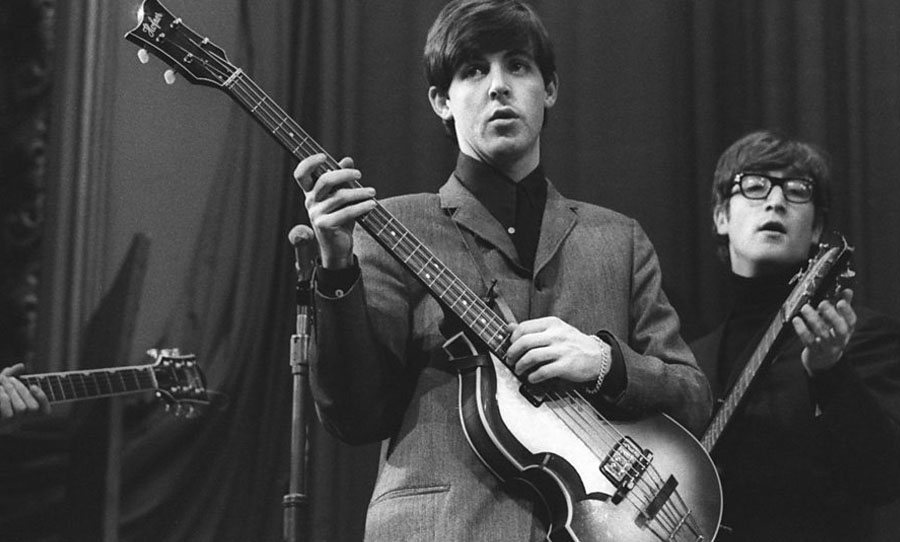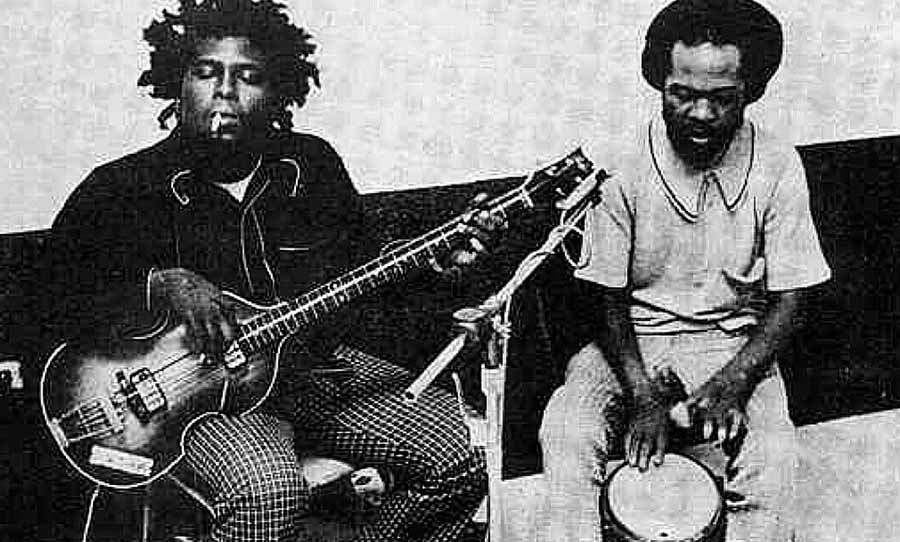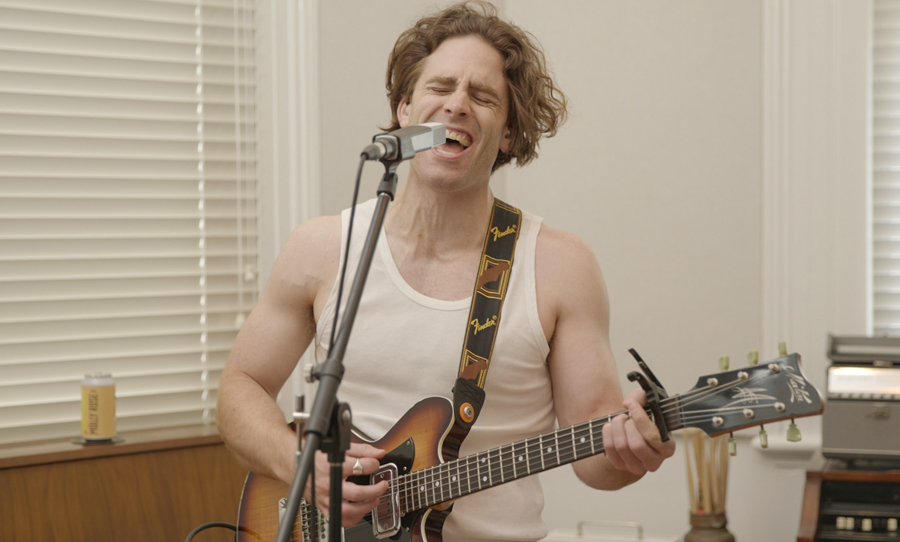The Höfner Violin Bass. Sure, luck smiled on this humble four-stringer in the early days, but it has gone on to create an identity of its own throughout the decades.
On paper, the Höfner 500/1 Violin Bass shouldn’t have been popular. For example, why would an instrument that most closely resembles the highest pitch member of the string family be a suitable choice for a low-end specialist like the bass? Plus, it also had a tone and aesthetic that swam stridently against the tide. How could it survive?
Not only did it survive — it thrived. It has since blazed its own trail for more than half a century, being the first pick for bass players across a broad spectrum of styles, living a life far beyond that particularly important band from Liverpool.

The Pre-Electric Era
Germany has a proud tradition of family-based companies that design and manufacture products on their home turf. The Höfner story is no exception.
Karl Höfner founded the company, selling his first violins in the late nineteenth century. He quickly forged a reputation for making high-quality instruments and his wares became popular throughout central Europe. When Karl brought two of his sons into the business, they extended their reach into offshore markets.
But twin upheavals were to rock the business to the core. Firstly, the Second World War and its aftermath meant the company’s production was restricted for lack of materials. They also had to move location after the war and basically start from scratch. The next was the revolution of rock and roll.
A Fateful Day
Höfner had been making guitars, but with the advent of the new direction in popular music, electric guitar and bass production significantly ramped up. The brand awareness, however, reached stratospheric levels when Paul McCartney bought a Violin Bass model from a shop in Hamburg – never again would the name be unrecognised.

Hollow-bodied basses may seem somewhat of an anomaly – the world is still dominated by the models that are based on the two famous Fenders – the Precision and the Jazz. Compared to the reputation and marketing power of these two at the time, the Höfner was literally and figuratively a lightweight.
But a couple of the bass’ attributes appealed to the young Beatle. For one thing, at the time of the pivotal McCartney purchase, the Violin Bass was much cheaper compared to the models from across the Atlantic. Another more serendipitous reason was that it sports a symmetrical body, making it easy to flip over for the left-hander.
It is fun to speculate on a few of the other possible reasons why this was a match made in heaven. The short-scale Höfner would have been an easier transition for the Beatle to make from the guitar. The nimble proportions of the fretboard also make for a less cumbersome playing experience. Could this have contributed to McCartney’s trademark melodic flair?
The materials used to build the Violin Bass includes maple for the back and sides of the body and spruce for the top. The proprietary twin pickups could be switched on individually or at the same time, with the neck yielding a particularly deep and luscious tone. All in all though, the specs of this instrument are solid without being spectacular.
What really makes the instrument more than the sum of its parts is that hollow body. With Höfner’s long-established expertise in the creation of acoustic instruments, they knew a thing or two about making things resonate.

Another secret to the success of this bass is its short scale. Strings on a short-scale instrument don’t require the same tension as they do on standard length basses. Therefore, the feel is a little floppier, which affects what synth fans would call the envelope of the sound. The attack and sustain are altered, as well as the harmonic composition of each note, resulting in a sound that has a richness in the bottom end that seems to contradict its modest size.
Generational Shift
The shadow of The Beatles dwarfs nearly all that have come after them, but that doesn’t mean that the Violin Bass hasn’t enjoyed a life beyond the Fab Four. The unique bottom end thump that it’s famous for inspired the likes of Robbie Shakespeare of Sly and Robbie – the rhythm section and production duo – possibly the most influential engine room of the reggae genre.
Anyone familiar with reggae will know the prominence of the bass line. The classics from the Bob Marley era aren’t drenched in bottom end though. The intersection of the resonant hollow-body and short scale offers up a unique tonal character, one that doesn’t highlight the upper harmonics, accentuating the roundness in the low-mid range of the frequency spectrum.
Each note on the bass has a fundamental frequency. When a note is played, a series of harmonics (multiples of that frequency) resonate in sympathy. On a full-scale bass, the upper harmonics ring out with more volume – the short scale doesn’t have the same richness in extended harmonics, resulting in a perceptibly woofy sound.
The Höfner is also a favourite of Kevin Parker – aka Tame Impala. His approach to the crafting the tone of the bass differs greatly from the reggae masters and Paul McCartney. Yet, the music of Tame Impala equally highlights the bass as an essential melodic voice.
Instead of a natural sound, Parker often couples the Höfner with distortion. Owing to the Violin Bass’ more subdued resonant qualities in the upper reaches of the frequency spectrum, the breakup of the bass tone is less distractingly fizzy, revealing a tone that has overdriven harmonic excitement, while still maintaining its trademark woodiness.
Also a fan of the Höfner is Deerhoof’s bassist and vocalist, Satomi Matsuzaki. The music of this band is infectious pop-punk, blended with noise rock: about as far away from the Violin Bass’ comfort zone as you could imagine. Yet, its mid-range snarl is completely at home in amongst the dissonant guitar harmonies and rapid transitions between different rhythms.
This bass is in some ways is the ultimate underdog, but probably never deserved to be. Sure, if it wasn’t for a star-crossed meeting in early ‘60s Hamburg, the instrument surely would not have garnered the amount of attention it has enjoyed in the preceding decades.
A museum piece though? No way. Artists throughout the subsequent eras have turned toward this hollow-bodied marvel as a way to transform the sound of their whole bands, while always putting the bass at the front of the mix.


